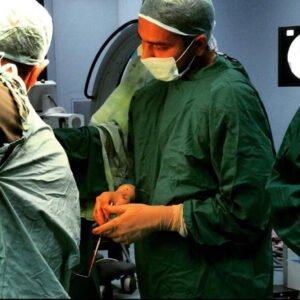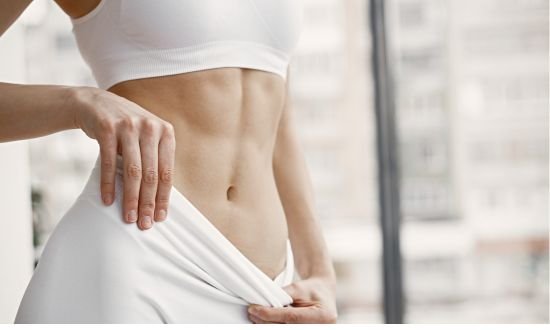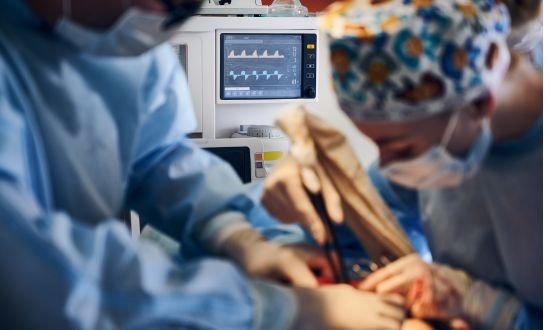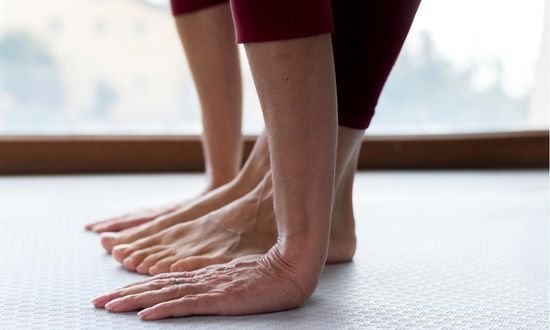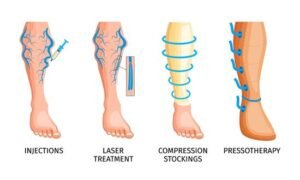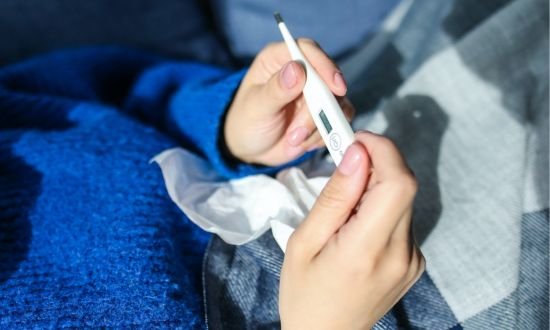Blue veins or reticular veins, spider veins, and varicose veins are three distinct conditions in which veins become prominent and blue. While they share a common root cause, which is venous insufficiency, their key difference lies in the change in the diameter of the veins. In this article we will explain the factors, medical conditions, management options, and differences between blue veins, varicose veins and spider veins. In all three conditions veins become prominent and blue but understanding their differences is important for proper diagnosis and treatment.
Table of Contents
ToggleWhat are Blue Veins?
Blue veins, often called reticular or feeder veins, are larger than spider veins but smaller than varicose veins. They are typically 1-3mm in diameter. They have a bluish or greenish color and lie just below the skin’s surface. They are most commonly found on the knees, thighs and sometimes on the face. These veins are often referred to as “feeder veins” because they can contribute to the development of other vein conditions.
What causes veins to appear bluish?
Veins look blue because of how light interacts with your skin. When white light, which contains various colors, hits your skin, red light can go deeper. It gets absorbed by the blood in your veins, making it look red inside. But blue light doesn’t go as deep and isn’t absorbed the same way, so we see veins as blue or green on the skin. Veins are easy to see because they’re larger, with thinner walls, and closer to the skin compared to arteries or capillaries.
Factors Causing Prominent Blue Veins
Several factors can contribute to the development of blue veins. It’s important to understand the root causes to address any potential health concerns:
1. Reticular Veins or Blue Veins:
Following are some of the factors that can increase the risk of reticular vein formation:
- Old Age
- Genetic predisposition
- Obesity
- Pregnancy
- Hormonal changes
- Occupations involving prolonged period of sitting or standing
- Geographical locations with increased exposure to sunlight and UV rays
2. Spider Veins:
Following are some of the factors that can cause spider veins formation:
- Genetic
- Hormonal Changes
- Trauma
- Connective Tissue Disorders
3. Varicose Veins: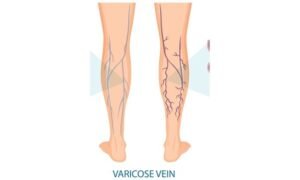
Factors that can increase the risk of varicose veins are:
- Female gender
- Obesity
- Pregnancy
- Prolong standing or sitting
- Family History
Common Health Conditions Associated with Blue Veins
In some cases, blue veins may be a sign of an underlying health condition. It’s important to be aware of these conditions and seek medical attention when necessary:
- Chronic Venous Insufficiency (CVI)
CVI occurs when the valves in the veins do not function correctly, causing blood to pool in the legs and leading to the development of prominent blue veins. It is the common cause for reticular veins, spider veins and varicose veins.
- Deep Vein Thrombosis (DVT)
DVT is characterized by formation of blood clot in a deep vein, often in the legs. It can lead to pain, swelling, and bluish discoloration of the affected limb.
- Superficial Thrombophlebitis
This condition involves the inflammation of veins near the surface of the skin, resulting in redness, swelling, and pain. It can also cause bluish discoloration.
Blue Veins in Hands: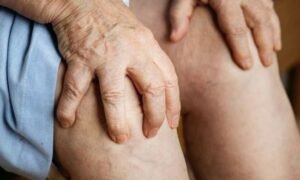
- Blue veins in hands are common and usually not a problem
- They can be more visible in fair-skinned people.
- Sometimes, cold or physical activity can make them stand out more.
- If they suddenly change or cause pain, consult a doctor.
Blue Veins on Breast:
- Blue veins on the breast are often normal.
- They may become more visible during pregnancy, exercise or breastfeeding.
- If you notice any unusual changes in these veins, it’s best to get a medical checkup.
- Your doctor can ensure there are no underlying issues.
When Blue Veins Become a Health Concern?
Bluish veins should be considered a health concern when they are accompanied by the following symptoms:
- Pain or discomfort in the affected area
- Swelling and inflammation
- Changes in the size, color, or texture of the veins
- Skin ulcers near the affected veins which are more common in varicose veins
If you experience any of these symptoms, it’s essential to seek medical attention promptly.
Difference between Reticular or Blue veins, Varicose Veins and Spider Veins
| Characteristic | Varicose Veins | Blue Veins | Spider Veins |
| Size | Greater than 3 mm | 1 mm to < 3 mm | Less than 1 mm |
| Location | Back of calves or inside of the leg | Surface of the skin | Commonly on the legs |
| Cause | Pooling of blood due to valve failure | Superficial veins engorged with deoxygenated blood | Weakened valves causing blood pooling |
| Appearance | Swollen, bulging veins above the skin | Stretched-out blue and green veins | Smaller, closer to the skin’s surface |
| Prevalence | Less common | Common | Common |
| Treatment | May require various treatments | Typically don’t require treatment | May require cosmetic procedures |
Tests to Diagnose Cause of Prominent Blue Veins
If you suspect that your blue veins are more than a cosmetic issue, a healthcare provider may recommend several tests to diagnose the underlying problem:
- Doppler Ultrasound
This test uses sound waves to create images of the blood flow in your veins, helping to identify any blockages or abnormalities.
- Venography
Venography involves injecting a contrast dye into a large vein in your foot, making it easier to detect blood flow issues in your legs.
- Magnetic Resonance Imaging (MRI)
An MRI can provide detailed images of your veins, helping doctors to identify any issues with blood flow or vein structure.
Treatment of Blue Veins
The treatment of blue veins can vary depending on the underlying cause and severity of the condition:
Lifestyle Changes
Lifestyle modifications can be very helpful in mild cases. Following can be done in this regard:
- Regular exercise
- Weight management
- Avoiding prolonged sitting or standing
Compression Stockings
Wearing compression stockings can improve blood flow and relieve discomfort in cases of varicose veins.
Medical Procedures
Various medical procedures are done for cosmetic reasons or in more severe cases with associated symptoms.
Reticular Veins:
Liquid sclerotherapy and foam sclerotherapy are done for treatment of reticular veins. These procedures involve injecting a solution into problem veins to close them.
Spider or Varicose Veins:
- Endovenous laser treatment, radiofrequency ablation, and Cyanoacrylate glue occlusion are minimally invasive procedures to seal off troublesome veins.
- Transilluminated powered phlebectomy is a technique that uses light to guide the removal of varicose veins.
- Ligation and stripping are surgical methods to physically remove problematic veins.
Preventive Measures for Blue Veins
While blue veins can sometimes be hereditary or related to aging, there are several preventive measures to reduce your risk of developing them:
- Maintain a healthy weight
- Stay physically active
- Avoid prolonged periods of sitting or standing
- Elevate your legs when resting
- Wear compression stockings if recommended by a doctor
Conclusion
Blue veins can be indicative of conditions other than aging. Sometimes, they’re completely normal and don’t need any special treatment. But, if you notice any changes or feel any discomfort along with the blue veins, it’s a good idea to check with a doctor. They can help figure out if there might be any health issues connected to those blue veins and recommend the right treatment if needed.
Disclaimer
Content on this site is written with thorough research and keeping in mind the latest guidelines. However, no content on this site should substitute professional consultation.

